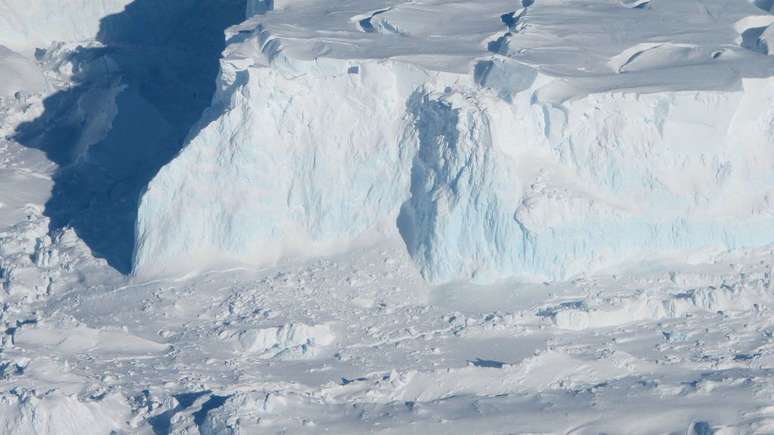Satellite images and mathematical models show that the “Doomsday Glacier” is melting at an accelerating rate; If it collapsed, sea levels would rise
In Antarctica, the Thwaites Glacier, popularly known as “Doomsday Glacier”is melting at an accelerating rate, according to satellite imagery from NASA. This speed warns of a probable rise in sea levels of around 60 cm in the coming years.
- Video: Underwater robot shows melting under ‘Doomsday Glacier’
- Sea level rise could be catastrophic in the next 100 years
Using images from the ICEYE DInSAR satellite, an international team of scientists, including researchers from the University of Waterloo (USA), is working on creating models to predict how quickly the “Glacier of the Apocalypse” it will melt.
Today it is already possible to observe the intrusion (“invasion”) of warm sea water in some parts of the glacier, but the tendency is for this process to accelerate further, as shown by the forecasts published in the journal Proceedings of the National Academy of Sciences (PNAS).
Melting of the “Apocalypse Glacier”
Seawater intrusion causes the “Doomsday Glacier” to continually move. It’s as if the ice lifted from the ground and settled again. The problem is that sea water is warmer and saltier and, consequently, causes erosion of the ice walls both at the edges and on the bottom.

“The flow of seawater under the underground ice for considerable distances makes the glacier more vulnerable to melting due to a warmer ocean than expectedwhich will in turn increase projections of ice mass loss,” the authors explain in the paper. This can be translated as a rise in sea level, at different levels.
When the entire block of ice melts, there will be a drastic rise in sea levels. After all, the glacier is about 120 km wide and 1.2 km deep.
Sea level rise
“Thwaites is the most unstable place in Antarctica and contains the equivalent of 60 centimeters of sea level rise,” explains Christine Dow, professor in the Faculty of Environment at the University of Waterloo and co-author of the study, in a statement. Other predictions point out that, in a herd effect along with glacier collapse, sea levels could rise more than 1 m.
Now, “the concern is that we are underestimating how quickly the glacier is changing, which would be devastating for coastal communities around the world,” Dow adds.
If sea levels rise, several coastal cities will face problems, especially those located at low altitudes, such as Vancouver (Canada), Florida (USA) and Bangladesh.
According to a previously published United Nations (UN) report, Sea level rise could also affect numerous Brazilian cities, such as Rio de Janeiro and Santos (São Paulo).
End of the glacier?
“We don’t currently have enough information to say how long it will take for ocean water intrusion to become irreversible,” stresses scientist Dow. However, if measures are not taken to contain climate change, such as reducing carbon emissionsthis process involving the collapse of the “Glacier of the Apocalypse” will be accelerated.
Next, watch as glaciers collapse as sea water invades their base and can create icebergs:
Source: PNAS AND University of Waterloo
Trends on Canaltech:
- Windows XP connects to the Internet and becomes infested with viruses within minutes
- The discovery of black holes confirms Einstein’s theory
- Alien finally explains why synthetics defend xenomorphs
- HMD prepares the “new Nokia Lumia” with classic design and Android 14
- 🚨 VERY CHEAP | Buy Galaxy S23 Ultra 256 GB with an exceptional discount
Source: Terra
Rose James is a Gossipify movie and series reviewer known for her in-depth analysis and unique perspective on the latest releases. With a background in film studies, she provides engaging and informative reviews, and keeps readers up to date with industry trends and emerging talents.





![Un Si Grand Soleil preview: Thursday, October 23, 2025 episode recap [SPOILERS] Un Si Grand Soleil preview: Thursday, October 23, 2025 episode recap [SPOILERS]](https://fr.web.img6.acsta.net/img/12/a9/12a96513d7a4f6120d33b7120427505f.jpg)
